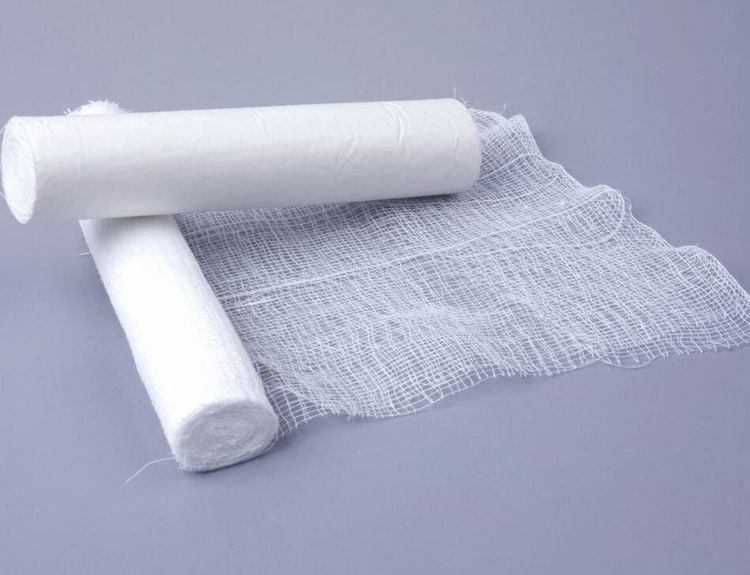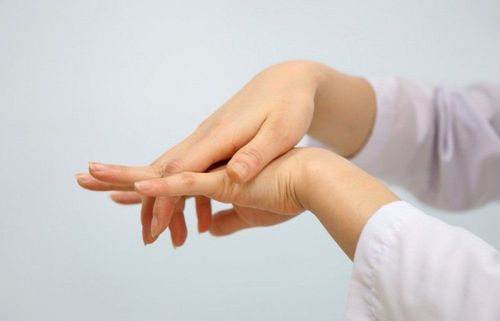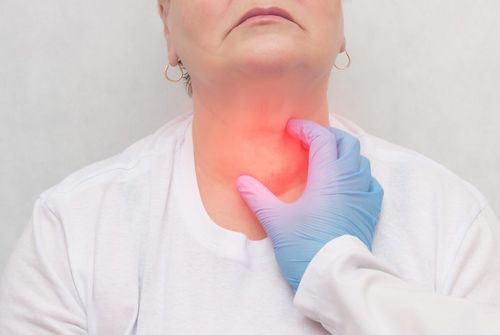This is an automatically translated article.
A wound about 7 to 10cm long after thyroid surgery will quickly heal in a few weeks. However, patients need to know how to care for the incision. When the incision site is well taken care of, it will help to form minimal scars and bring high aesthetics.
Methods of scar care after thyroid surgery are presented in turn as follows:
1. Keep the thyroid nodule incision clean
1.1. Keep the wound clean and dry
One of the most important things after thyroid surgery is to keep the wound clean and dry. After discharge from the hospital, it is necessary to follow the doctor's instructions in wound care and bathing after surgery. Doing so can help prevent the wound from becoming infected, and it can also help it heal faster.
Do not apply water to the wound until it is completely healed. In particular, the patient is not encouraged to swim or immerse the wound in water while bathing.
Immediately after surgery, in some cases, it may be necessary to place a small drainage tube to help drain fluid out of the neck skin near the thyroid incision site. The role of this tube is to help keep the fluid that accumulates in the patient's neck from stagnation because this is a predisposing factor that can lead to infection and further soreness. Your doctor will remove the drain before you leave the hospital if the tube has cleared significantly and the fluid is clear, with no strange color or odor.
1.2. Clean the incision area the day after surgery
Immediately after surgery, the patient can shower and allow water or mild soap to run over the wound. However, the patient should not rub the wound or put any pressure on it whether by high-pressure water or the patient's fingers. Allow only a small amount of water to flow over the incision site and gently clean it.
1.3. Change the gauze every day
After surgery, the doctor will cover the wound with some gauze and hold it with duct tape. For the following days, the patient may need to change the dressing once daily to keep the wound clean.
Be very gentle when removing old gauze as it can stick to the skin. If it is stuck, about a teaspoon of hydrogen peroxide or saline should be used to moisten the gauze, making it easier to remove. Then, use a cotton ball soaked in hydrogen peroxide or physiological saline to gently clean any dried blood from the skin before changing the dressing.

Thường xuyên làm sạch vết thương và thay băng gạc
1.4. Watch for signs of infection
Infection occurring at the surgical site during thyroid surgery is rare as this is considered a clean operation so the possibility of contamination is minimal.
However, it is important to observe the postoperative wound for signs of infection and tell the doctor right away if the patient notices any of these signs, including:
Red, hot or swelling around the wound Fever from over 38 degrees Celsius Drainage has pus, turbidity, odor, or increased discharge The wound is open.
2. Promote healing of scars after thyroid surgery
2.1. Stop and quit smoking
Smoking can delay scar healing, not only in postoperative thyroid scars but surgical interventions in general.
Therefore, right before surgery, it is best for the patient to quit smoking. Talk to your doctor about smoking cessation programs and other support measures that can help you quit smoking successfully.
2.2. Follow a complete and balanced diet
Good nutrition is one of the important ways to support the body's healing and healing processes.
However, because scarring after thyroid surgery can be painful in the first few days after surgery, the patient may need to follow a liquid diet or soft foods. Specifically:
A liquid diet consisting of milk, juice, soup, porridge,... A soft food diet consisting of pudding, mashed potatoes, mashed apples, ice cream, yogurt.. Patients should be able to switch from liquid to soft foods and to solid foods if tolerable after a few days. However, if the patient has pain when swallowing, this time should take the pain reliever about 30 minutes before each meal so that eating becomes easy and palatable.
2.3. Use sunscreen for scars after thyroid surgery
Patients should pay attention to apply sunscreen and cover up the scar area after thyroid surgery when going outdoors until the wound has completely healed.
Should choose to use sunscreen with a high SPF, such as SPF 30+. At the same time, it is also advisable to keep the scar covered under a scarf throughout the year. Applying these measures to protect the scar from the sun, will give the best cosmetic results for the scar on the neck
However, you must make sure that the wound is completely healed before when you put sunscreen on it. This will take about two to three weeks.
3. Coping with pain after thyroid surgery
3.1. Take pain relievers as directed by your doctor
Most patients will need to take potentially addictive pain medications after surgery. Therefore, it is important to follow your doctor's instructions on how to use these drugs and do not exceed the recommended dosage.
Remember that pain relievers from this class can cause constipation. Therefore, patients need to remember to drink 8 to 10 glasses of water a day and eat foods that contain fiber. In addition, a stool softener can also be used to deal with constipation.
When pain level is better, patients should switch to safer pain relievers such as paracetamol or acetaminophen at doses within the recommended range to avoid damage to the liver. Avoid taking nonsteroidal anti-inflammatory drugs because they can cause potential bleeding.

Bệnh nhân nên bổ sung chất xơ để tránh táo bón
3.2. Use cold compresses to help relieve pain
In cases where systemic pain relievers do not have a comprehensive effect, it is possible to combine additional local pain relief methods such as using cool compresses, applying ice packs... 15 minutes for pain relief. The patient can do this once every hour but make sure you don't further damage the incision with frostbite.
3.3. Limit neck movement after surgery
It is important to remember to limit neck movement for one to three weeks after thyroid surgery. At the same time, avoid exercises that need to use this area as well as carrying things on the shoulders and neck. Any impact of pressure can cause slow wound healing or there will be a risk of scar healing and loss of aesthetics.3.4. Early detection of complications after thyroid surgery
There are a number of possible complications that patients need to monitor in the postoperative period after surgery for thyroid tumors. Accordingly, if a patient experiences any of these complications, notify the physician immediately and arrange for a follow-up visit soon:
Weak voice Numbness or tingling Chest tightness, shortness of breath Excessive cough Limited or absent ability to eat or swallow. In summary, the head - face - neck is an area containing complex structures and patients need certain knowledge to monitor and care after thyroid tumor surgery. Following the doctor's instructions and periodically re-examining as well as choosing quality and professional medical facilities from the beginning will help effectively treat thyroid diseases and achieve the highest aesthetics.
full.
Customers who need examination and treatment can directly go to Vinmec International General Hospital or book an appointment HERE.













